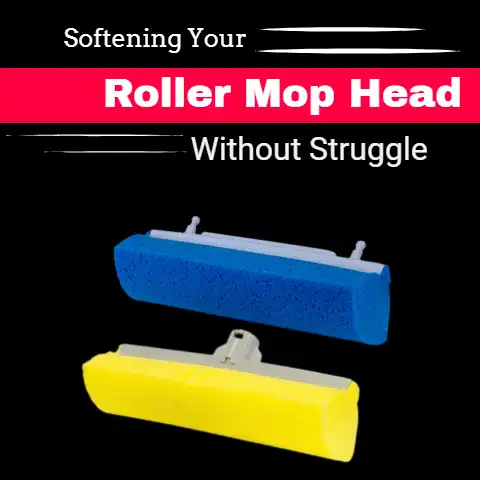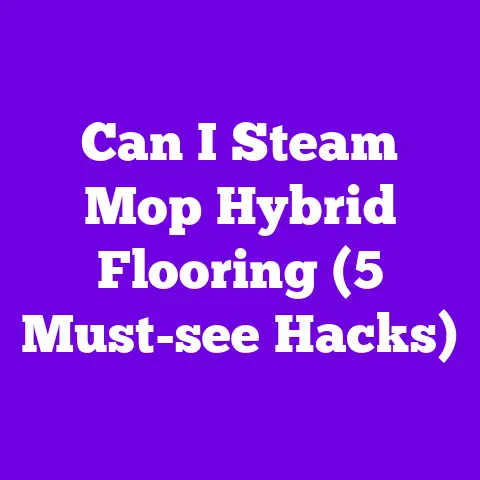Can You Clean Hardwood Floors With A Steam Mop (Is It Safe?)
Myth Busting: Steam Mops and Hardwood Floors
I’ve heard it countless times: “Steam mops are perfect for cleaning hardwood floors.” But is this really true? Let’s dive deep into this myth and explore whether you can safely use a steam mop on those beautiful hardwoods.
Personal Experience with Steam Mops
Some years ago, I decided to give my hardwood floors a quick refresh. I grabbed my trusty steam mop, thinking it would save me time. But to my horror, after a few uses, I noticed the floor starting to warp slightly! The steam was too much for the wood. Have you ever had that sinking feeling when you realize you’ve made a mistake? Let’s avoid that together!
Why Steam Mops Seem Tempting
Steam mops promise to clean and sanitize without chemicals, making them popular for tiles and other sealed surfaces. Their ease of use and effectiveness can be alluring, but hardwoods need a gentler touch.
Understanding Hardwood Floor Sensitivity
The Nature of Wood
Wood is a natural, porous material. It absorbs moisture, and too much can lead to warping and damage. If you’ve ever spilled water on a wooden table, you know how it can cause stains or raised grains.
Types of Hardwood Finishes
Different finishes have different sensitivities:
- Oil-based finishes: These are durable but can be sensitive to heat.
- Water-based finishes: Often less durable and more susceptible to moisture.
Understanding your floor’s finish helps tailor your cleaning strategy.
Impact of Steam on Hardwood
Steam introduces both heat and moisture. While it might sound like a quick cleaning fix, it can lead to long-term damage like buckling, discoloration, and dulling of the finish.
Detailed Cleaning Methods for Hardwood Floors
Let’s break down some safe cleaning methods, ensuring your floors remain pristine without risking damage.
1. Dry Dusting for Everyday Clean
Dusting daily or every other day keeps grit and debris from scratching the surface.
- Materials Needed: Microfiber mop or cloth.
- Steps:
- Attach the microfiber pad to your mop.
- Sweep gently across the floor, following the grain.
- Tips: Avoid using abrasive pads or harsh chemicals.
Why Dusting Matters
Daily dusting prevents scratches by removing tiny particles that can act like sandpaper underfoot. Think of it as a protective measure to keep your floors looking new.
2. Damp Mopping for Deeper Cleans
Occasionally, a damp mop helps lift dirt without soaking the wood.
- Materials Needed: Mild wood floor cleaner, microfiber mop.
- Steps:
- Lightly spray cleaner onto the pad.
- Mop in sections, ensuring the pad is only damp.
- Dry the area immediately with a clean cloth.
- Warnings: Never let water pool on your floor. It should dry almost instantly.
Choosing the Right Cleaner
Select a pH-neutral cleaner designed specifically for hardwood floors. Avoid anything with ammonia or bleach, as they can strip the finish.
3. Spot Cleaning Stubborn Stains
For spills or sticky spots, a little extra effort is needed.
- Materials Needed: Soft cloth, mild cleaner.
- Steps:
- Dampen cloth with cleaner.
- Rub gently on the spot.
- Wipe dry immediately.
- Mistakes to Avoid: Scrubbing too hard can damage the finish.
Tackling Common Stains
- Food Spills: Wipe up immediately with a damp cloth.
- Grease Marks: Use a small amount of dish soap diluted in water.
- Ink Stains: Gently dab with rubbing alcohol on a cloth.
4. Polishing for Long-term Care
Polishing your floors every few months can bring back their shine and provide an extra layer of protection.
- Materials Needed: Floor polish, applicator pad.
- Steps:
- Clean the floor thoroughly before starting.
- Apply polish evenly with an applicator pad.
- Allow to dry as per product instructions.
Benefits of Polishing
Polishing fills in small scratches and adds a protective layer that can help prevent future damage from foot traffic and minor accidents.
Common Mistakes and How to Avoid Them
Let’s look at some pitfalls you might encounter while maintaining hardwood floors:
- Using Too Much Water
Even damp mopping should be done sparingly to prevent moisture absorption. - Choosing Wrong Cleaners
Avoid ammonia-based products; they can dull finishes. - Ignoring Spills
Quick action helps prevent staining or water damage. - Not Knowing Your Finish
Different finishes require different care techniques.
Proper Cleanup and Finishing Procedures
Always ensure floors are completely dry after cleaning. Use fans if necessary to speed up drying, especially in humid climates. Proper finishing procedures include regular inspections for signs of wear and planning refinishing when necessary.
Safety Considerations
- Always test cleaning products on a small, inconspicuous area first.
- Keep pets and kids off freshly cleaned areas until fully dry to prevent slips and falls.
- Wear non-slip footwear while cleaning to avoid accidents.
FAQs
Q: Can I ever use a steam mop on hardwood floors?
A: Ideally, no. If you must, ensure your floors are sealed perfectly and use the lowest steam setting.
Q: What’s the best cleaner for hardwood floors?
A: A pH-neutral cleaner designed specifically for wood works best.
Q: How often should I clean my hardwood floors?
A: Dust daily and damp mop weekly or bi-weekly depending on foot traffic.
Q: How do I know if my floor needs refinishing?
A: If water no longer beads on the surface or there are significant scratches and dullness, consider refinishing.
By now, you probably have a better idea of why steam mops aren’t friends with hardwood floors. Stick to gentler methods, and your floors will thank you! Have you made any cleaning blunders you’d like to share?






